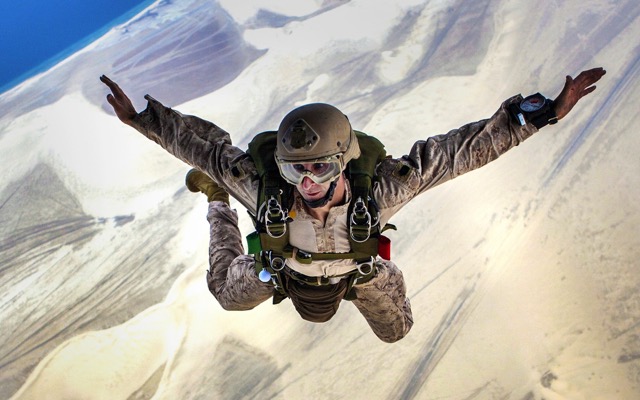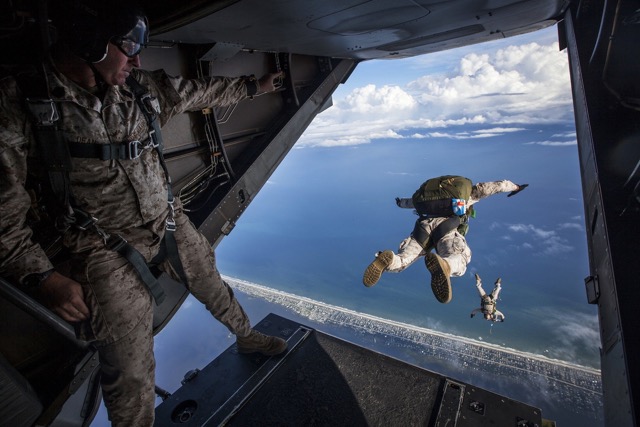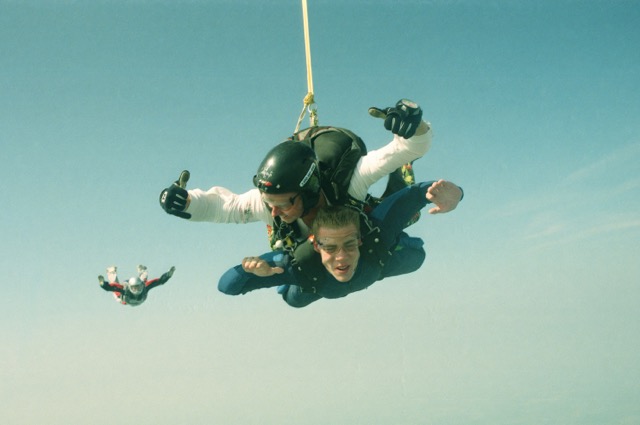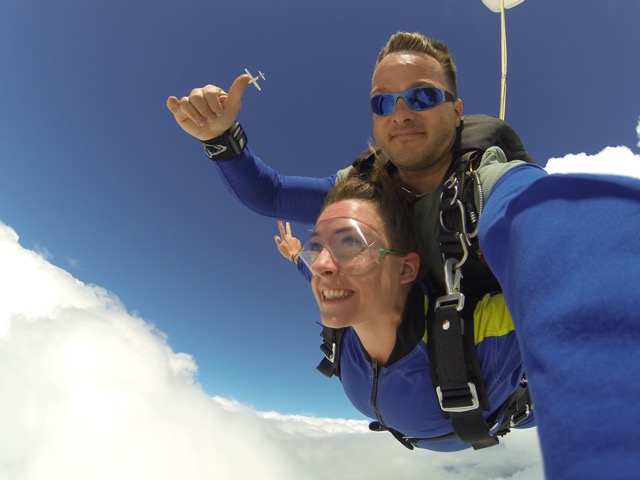Are you an adrenaline junkie seeking an exhilarating experience that will push your limits? Look no further than tandem skydiving, the epitome of thrill-seeking adventures! Whether you’re a seasoned skydiver or a first-timer, tandem skydiving offers a unique and safe way to experience the thrill of freefall. We will explore the world of tandem skydiving, explain the difference between tandem and solo skydiving, delve into what happens during a tandem skydive, and discuss the safety aspects of this heart-pounding activity. So strap in and get ready to embark on an unforgettable journey through the skies!
Introduction

Tandem skydiving is an exhilarating adventure sport that allows individuals to experience the thrill of skydiving without having to undergo extensive training. In a tandem skydive, a novice skydiver is securely harnessed to a highly experienced instructor who serves as the “pilot” during the jump. This form of skydiving has gained immense popularity due to its accessibility and the adrenaline rush it provides.
Tandem skydiving is the perfect option for those who want to experience the sensation of freefall and the breathtaking views from above without the added responsibility of operating the parachute themselves. The experience begins with a thorough safety briefing where the instructor explains the procedures and addresses any concerns the participant may have.
Once suited up in the necessary gear, the participant is attached to the instructor through a specially designed harness system. The pair then boards the aircraft, typically a small plane specially modified for skydiving, and ascends to the desired altitude. During the ascent, the instructor further calms any nerves and prepares the participant for the exhilarating experience that lies ahead.
What Is the Difference Between Tandem Skydiving and Skydiving?

Tandem skydiving and skydiving are often used interchangeably, but there are actually some key differences between the two activities. While both involve jumping out of an airplane and descending to the ground with a parachute, there are distinct variations in terms of training, equipment, and overall experience.
In tandem skydiving, the participant is attached to a professional skydiver who is responsible for controlling the parachute and ensuring a safe descent. This means that the participant does not require any prior experience or training, as the instructor takes care of all the technical aspects. It provides a great opportunity for beginners or those who simply want to experience the thrill of skydiving without having to learn all the techniques.
On the other hand, traditional skydiving, also known as solo skydiving or static line skydiving, requires the individual to undergo a comprehensive training program and obtain the necessary certifications. This training includes ground instruction, practicing body positions, emergency procedures, and parachute deployment techniques. Once the training is completed, the participant can jump from the aircraft on their own and follow the necessary procedures to control their descent and land safely.
What Happens in a Tandem Skydive?

In a tandem skydive, you will experience the thrill of jumping out of a plane and free-falling through the sky before safely landing with the help of an experienced instructor. But what exactly happens during this exhilarating adventure?
Firstly, before you embark on your tandem skydive, you will receive a thorough briefing from your instructor. They will explain the equipment, safety procedures, and what you can expect throughout the jump. It’s essential to listen carefully and ask any questions you may have.
Once you’re fully prepared, it’s time to put on the necessary gear, which usually includes a jumpsuit, goggles, helmet, and a harness that attaches you securely to your instructor. Safety is of utmost importance, so make sure everything is properly fitted and secure.
Is Tandem Skydiving Safer Than Solo?

When it comes to skydiving, safety is a topic that is always on people’s minds. One of the questions that often arises is whether tandem skydiving is safer than solo skydiving. In order to answer this question, it’s important to understand the differences between the two types of skydiving experiences.
Firstly, let’s define what tandem skydiving and solo skydiving are. Tandem skydiving is a type of skydiving where an experienced instructor is attached to the skydiver throughout the entire jump. This instructor is responsible for deploying the parachute and ensuring a safe landing. On the other hand, solo skydiving involves the skydiver jumping alone, without the assistance of an instructor.
So, is tandem skydiving safer than solo skydiving? The answer to this question is not so straightforward. Tandem skydiving is generally considered to be the safer option for beginners or people who are new to skydiving. This is because the instructor is there to guide and assist the skydiver throughout the entire jump. They have extensive training and experience, which helps to minimize the risk of accidents or mistakes.
One of the main advantages of tandem skydiving is that the instructor is in control of the jump from start to finish. They are responsible for deploying the parachute at the right altitude and ensuring a safe landing. This means that even if the skydiver were to panic or freeze during the jump, the instructor is able to take control and ensure a safe outcome.
Additionally, tandem skydiving allows the skydiver to focus on enjoying the experience, rather than worrying about the technical aspects of the jump. The instructor takes care of all the necessary precautions and procedures, allowing the skydiver to simply sit back and enjoy the adrenaline rush of freefalling.

Solo skydiving, on the other hand, requires the skydiver to have a certain level of skill and experience. Before being allowed to jump solo, skydivers must complete an extensive training program and obtain the appropriate licenses. This training equips them with the necessary knowledge and skills to handle various situations during a jump.
While solo skydiving does involve more responsibility and risk, it also offers a greater sense of freedom and independence. Experienced skydivers often prefer solo jumps as they have full control over their own jumps and can choose their own flight path.
In conclusion, both tandem skydiving and solo skydiving have their own advantages and considerations. While tandem skydiving may be considered safer for beginners or those without experience, solo skydiving offers a sense of independence and the opportunity for experienced skydivers to fully control their own jumps. Ultimately, the choice between the two comes down to personal preference and the level of skill and experience of the skydiver.




